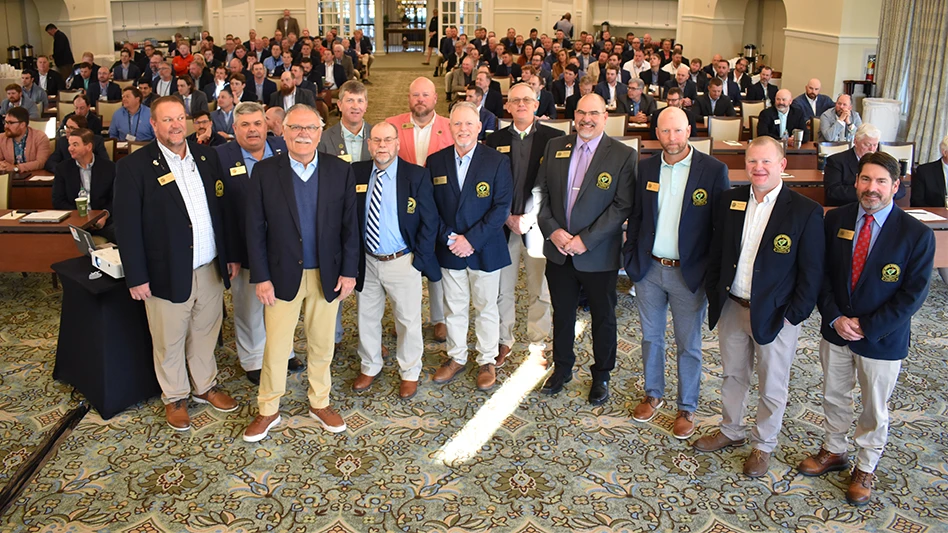Golf course superintendents from the Carolinas received a glimpse of what their peers in other areas of the country have been dealing with this year, courtesy of U.S. Golf Association agronomists who spoke at the Carolinas GCSA Conference and Show in Myrtle Beach in November.
Darin Bevard, USGA Green Section agronomist in the Mid-Atlantic region, saw weather extremes that included flooding and frost damage. Bevard says anthracnose is effecting Poa annuna putting greens, and that’s encouraging course managers to transition from Poa to bentgrass – the As and the Gs.
In the warm-season turfgrass arena, Riviera and Patriot are new, cold-tolerant Bermudagrass varieties found in the District of Columbia and Maryland. Patriot retains color well into October, Bevard says.
“It’s a good option for those who can’t afford to spray a ton of fungicides in the summer if they have bentgrass,” he says of Patriot.
Other observations of the Mid-Atlantic region from Bevard include:
· There’s a ton of renovation happening in the region. “Half of all the clubs I visited had something going on,” he says.
· Superintendents are stripping out green surrounds and sodding them.
· There are more ways to aerate and be less disruptive.
· Topdressing can provide faster, firmer fairways.
· A 25- to 30-percent increase of nitrogen is good, but not excessive amounts, because it helps control with anthracnose.
· Tree removal programs are a huge trend.
· A lot of nuisance diseases, such as fairy ring, are becoming a problem. There’s a resurgence in take-all patch. Both are difficult to cure preventively.
· Golfer expectations are off the charts.
Charles “Bud” White, USGA Green Section agronomist for the Mid-Continent region, says expanding clays, which are a result of heat and drought, are causing damage to cart paths. He also questions what damage could occur after the clay shifts back after rain.
Courses also are experiencing burn from irrigation because of salts in the water. White suggests superintendents need to be proactive with aeration and flushing because of salt build-up, which contributes to black layer that’s been prevalent.
Additionally, scalping was common in July and August because of extreme heat and drought.
Todd Lowe, USGA Green Section agronomist in the Florida region, says that because ultradwarf Bermudagrass accumulates organic matter more than the older Bermudagrass varieties, aerating more holes per square inch is the name of the game, and aerating, verticutting/grooming and sound topdressing are the trifecta.
As far as other warm-season varieties, Lowe says some seashore paspalum varieties can be used wall to wall and seashore paspalum has a deeper root zone than Champion Bermudagrass.
Also, Celebration Bermudagrass – which has a dark green color and a dense, thick canopy – is the new kid on the block. GCN
Get curated news on YOUR industry.
Enter your email to receive our newsletters.
Explore the November 2006 Issue
Check out more from this issue and find your next story to read.
Latest from Golf Course Industry
- Atlanta Athletic Club approves funding for master plan
- PBI-Gordon introduces new field development team
- The Cabot Collection announces move into course management
- Carolinas GCSA raises nearly $300,000 for research
- Advanced Turf Solutions’ Scott Lund expands role
- South Carolina’s Tidewater Golf Club completes renovation project
- SePRO to host webinar on plant growth regulators
- Turfco introduces riding applicator






